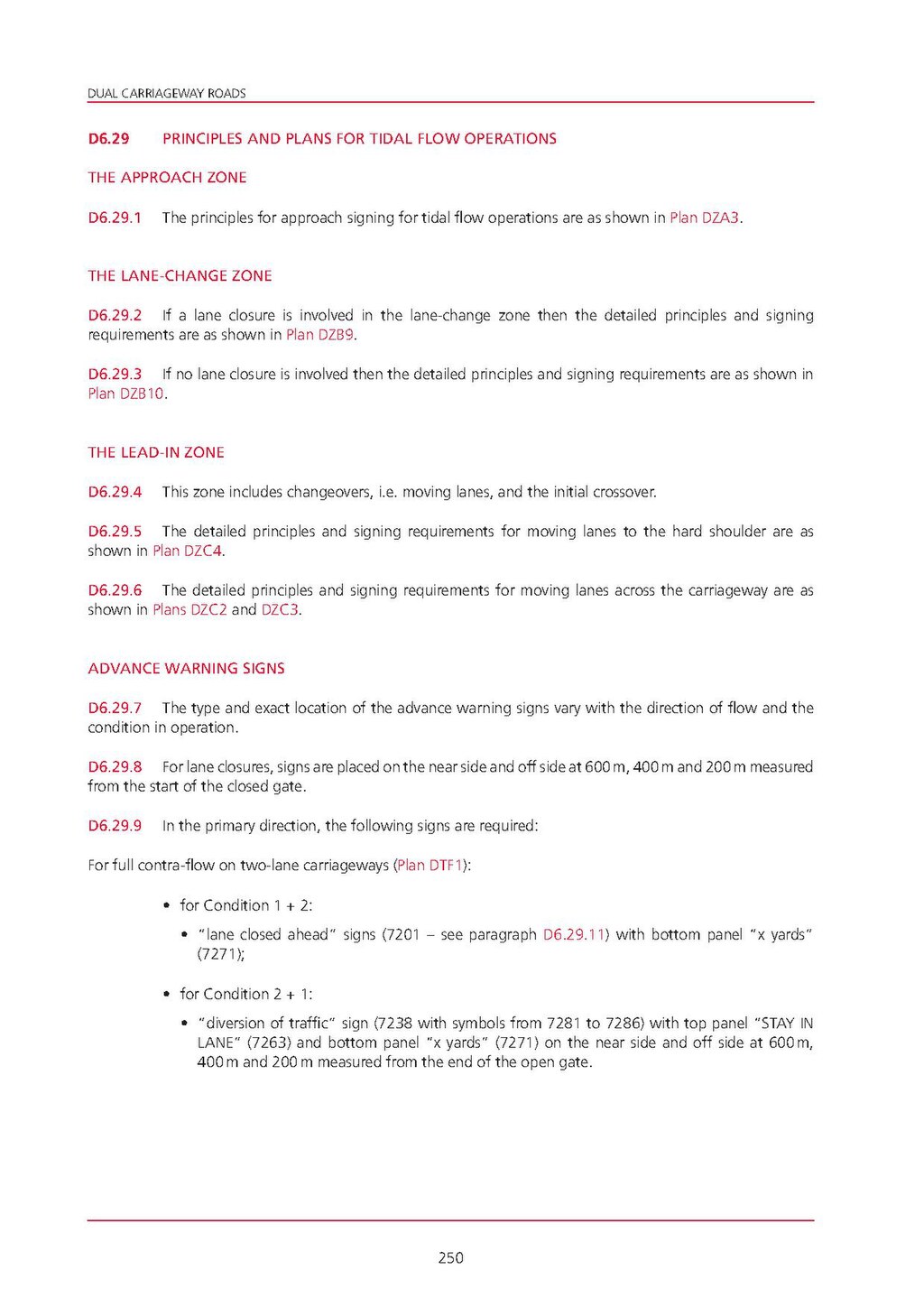D6.29PRINCIPLES AND PLANS FOR TIDAL FLOW OPERATIONS
THE APPROACH ZONE
D6.29.1 The principles for approach signing for tidal flow operations are as shown in Plan DZA3.
THE LANE-CHANGE ZONE
D6.29.2 If a lane closure is involved in the lane-change zone then the detailed principles and signing requirements are as shown in Plan DZB9.
D6.29.3 If no lane closure is involved then the detailed principles and signing requirements are as shown in Plan DZB10.
THE LEAD-IN ZONE
D6.29.4 This zone includes changeovers, i.e. moving lanes, and the initial crossover.
D6.29.5 The detailed principles and signing requirements for moving lanes to the hard shoulder are as shown in Plan DZC4.
D6.29.6 The detailed principles and signing requirements for moving lanes across the carriageway are as shown in Plans DZC2 and DZC3.
ADVANCE WARNING SIGNS
D6.29.7 The type and exact location of the advance warning signs vary with the direction of flow and the condition in operation.
D6.29.8 For lane closures, signs are placed on the near side and off side at 600 m, 400 m and 200 m measured from the start of the closed gate.
D6.29.9 In the primary direction, the following signs are required:
or full contra-flow on two-lane carriageways (Plan DTF1 ):
- for Condition 1 + 2:
- "lane closed ahead" signs (7201 — see paragraph D6.29.11]) with bottom panel "x yards" (7271),
- for Condition 2 + 1:
- "diversion of traffic" sign (7238 with symbols from 7281 to 7286) with top panel "STAY IN LANE" (7263) and bottom panel "x yards" (7271) on the near side and off side at 600 m, 400m and 200m measured from the end of the open gate.
250
